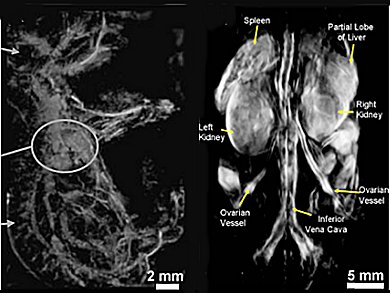Photoacoustic tomography (PAT) utilizes a short-pulsed laser light to induce thermo-elastic expansion of proteins such as hemoglobin and contrast agents, which then produce pressure waves (photoacoustic waves) that are received on a wide-band ultrasonic transducer and converted to images.
Although photoacoustic imaging is a nascent technology, it has received broad interest for clinical translation by major manufacturers of biomedical imaging instrumentation. Within the last year, VisualSonics Inc. and Endra Inc. have already brought animal research scanners to the market to support contrast development.
Gregory M. Lanza, Department of Medicine at the Washington University Medical School, St Louis, MO, USA, has compiled a special issue on photoacoustic or optoacoustic Imaging for the journal Contrast Media & Molecular Imaging.
For the reader, this special issue provides a definitive presentation of the photoacoustic imaging and related contrast agents, which we hope will enthuse experimentation to advance and refine these technologies for basic and clinical applications. Photoacoustic Tomography, or short PAT, is a new acronym to remember!
- Special Issue: Photoacoustic Imaging,
Edited by: Gregory Lanza
Contrast Media Mol. Imaging 2011, 6.
Articles are free untill 1 February 2012.




